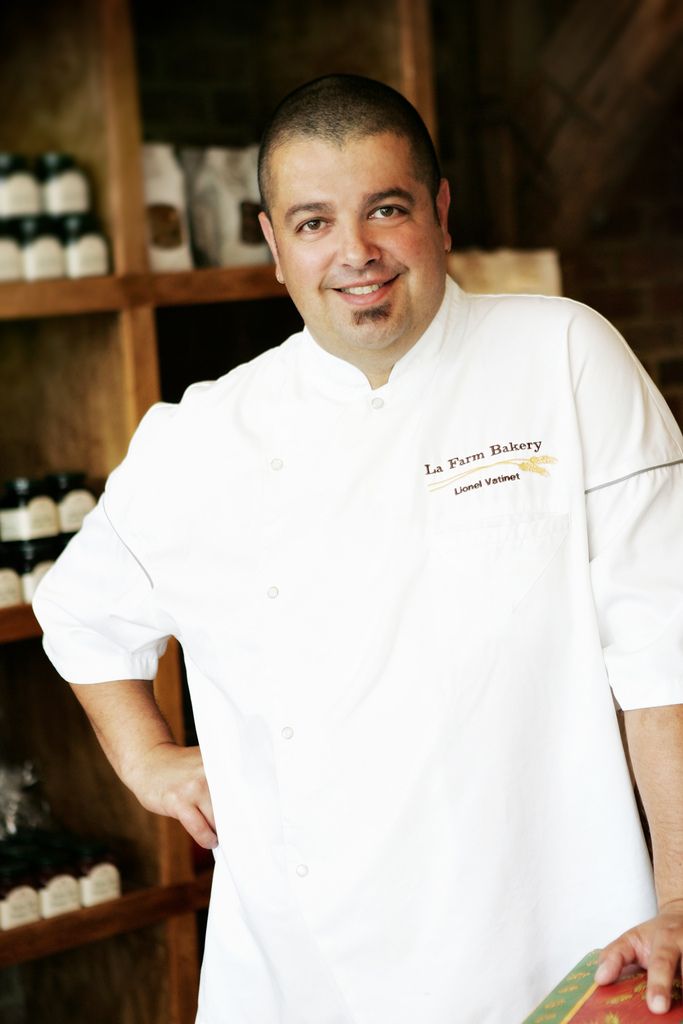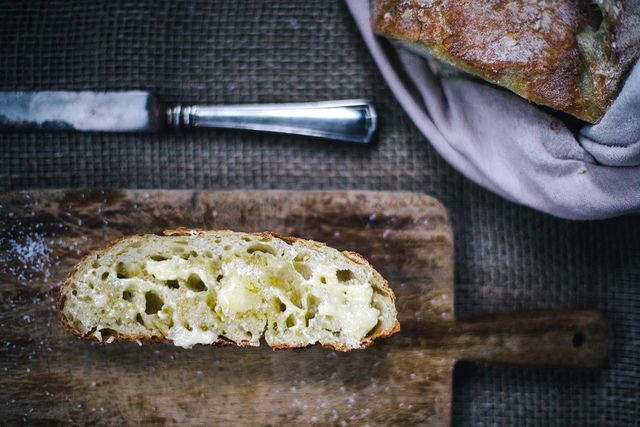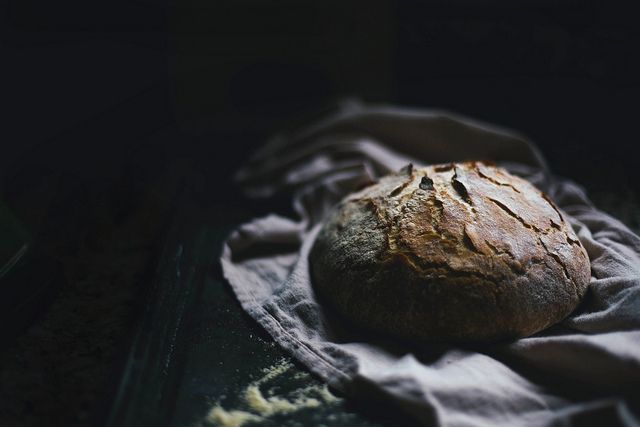Popular on Food52
42 Comments
BurgeoningBaker
November 19, 2013
I find the hardest thing for me is scoring the bread correctly so that it expands in the way I expect
Jeffrey L.
November 18, 2013
Knowing when its ready to bake, has it risen enough? And at what temperature to have a nice outer crust with a bit of a chewy center, especially for a sourdough.
AntoniaJames
November 18, 2013
For those of you concerned about kneading too much, this link may be of interest: http://www.thefreshloaf.com/node/9544/kneading-how-much-too-much In particular, consider this, paraphrased from Peter Reinhart, one of the most reliable and experts in home bread baking on the planet:
. . . if you are using a stand mixer, it will overheat before your bread does; and if you are kneading by hand, you will tire out long before your gluten gets overdeveloped.
For those of you who tire of kneading, let the dough do the work for you! The gluten will develop on its own, beautifully, shortening the time required for kneading, if you just let the dough sit for about 25 minutes after you do an initial minute or two of kneading, once the dough has come together.
Try it. You will be amazed. You will never find kneading too tiring again, because your dough will only require five or six additional minutes, at most. It's almost magical. Cover the dough with a damp tea towel while it's resting.
Hope this helps! ;o)
. . . if you are using a stand mixer, it will overheat before your bread does; and if you are kneading by hand, you will tire out long before your gluten gets overdeveloped.
For those of you who tire of kneading, let the dough do the work for you! The gluten will develop on its own, beautifully, shortening the time required for kneading, if you just let the dough sit for about 25 minutes after you do an initial minute or two of kneading, once the dough has come together.
Try it. You will be amazed. You will never find kneading too tiring again, because your dough will only require five or six additional minutes, at most. It's almost magical. Cover the dough with a damp tea towel while it's resting.
Hope this helps! ;o)
Krista
November 18, 2013
Getting the crispy crust is my biggest challenge - the stainless steel bowl idea is fantastic, I'll have to try it next time!
Miss F.
November 18, 2013
The most difficult thing for me is to let it cool completely after baking before cutting into it! I know that I should wait, but more often then not I just can't do it.
klrcon
November 17, 2013
My biggest challenge right now is getting a nice crunchy crust - no matter what I try - water sprays, dutch oven, it never really seems to work right. I'm going to try the stainless steel bowl method suggested here - cause hope springs eternal!
Catherine
November 17, 2013
The hardest part for me is waiting for the dough to rise, and not quite knowing what's the right temperature, how to get my kitchen to be that temperature, and knowing when it's risen!
Kacia
November 17, 2013
My many, many mistakes have been from not knowing the right "look" or "feel" before moving on to another step, becuase I don't have a baker by my side to guide me in that. For example, an experienced baker could tell me when I've over or under kneaded something, when it has too little/much flour, and when it's risen enough. Every failed loaf has helped me come closer to baking confidence though, because I know "Well THAT wasn't right. Somehow..." and I do learn from that!
Lee A.
November 16, 2013
Our high altitude and lack of humidity pose challenges in consistently getting a good result. It's always edible, but not always pretty.
muse2323
November 16, 2013
Finding a good way to bake it--I've cracked two of my favorite stones this year!
lauraandakira
November 16, 2013
The hardest part for me is sifting through bad advice and finding reliable sources for advice, tips, and recipes. This website is my go-to.
s
November 16, 2013
I live in China, so I bake with a toaster oven. These days, everything is a little bit harder.
Ann
November 16, 2013
Kneading. I always get tired or bored before I'm done, and I don't like the feel of messy hands.
courtney
November 16, 2013
Over-kneading. There is something about a beautiful mound of soft, springy dough that just screams "play with me!" The kneading, the portioning, the rolling and/or shaping...with every step I must remind myself how delicate and oftentimes temperamental dough can be. However, I have found that the beauty of dough is its forgiving nature. For when I just can't resist that temptation to indulge in squeezing, stretching, shaping, rolling (repeat, repeat, repeat), I will allow myself that gratification rest-assured that all the dough will need is a little extra rest before it is ready to perform its glorious transformation. And every time my dough, which started with a few simple ingredients, morphs into a magical piece of deliciousness; a beautifully golden, crusty shell encasing a soft and deliciously spongy interior. And every time, I surrender to the sublime aroma that permeates throughout my home and reward my salivating buds with a little ounce of yeasty heaven!
augustabeth
November 16, 2013
Worries! Have it kneaded to the right point or past it? Has it risen sufficiently? Do I have enough time to get it done by dinner? Will my loaf cook evenly in my not so great oven? But even if I fail at all these the smell of baking bread undoes the worry!
Jean B.
November 16, 2013
I think I have wanted to bake a great loaf of bread every time without perfecting my technique. I need to remind myself that baking bread is a skill which I can learn to do well and to enjoy that process...
Kelly
November 16, 2013
Working with an electric oven and not having an even temperature. Unfortunately, getting a gas stove is not an option. So the difficulty comes to whee to locate the bread in my oven, when to check for doneness and if my oven will play nice.
cookinginvictoria
November 16, 2013
My biggest challenges are kneading (I never think I'm doing it correctly) and shaping the dough. Love the tip about using a stainless steel bowl to create a crusty exterior. I plan to try that next time I'm baking bread -- hopefully in the next week or two. :)
AntoniaJames
November 15, 2013
Shaping the dough. I'm a big fan of "rustic" (meaning, it doesn't have to be perfect) types, for that very reason. Looks like an interesting, well-conceived book! ;o)
skb
November 15, 2013
I make mostly quick breads (beer bread!), and the hardest thing for me is dealing with the sticky dough without panicking that the bread is going to have to be cooked off my hands!
Victoria S.
November 15, 2013
I have a really hard time with learning how to knead properly...I just can't seem to get the hang of it!
Jessica
November 15, 2013
I make beautiful pain de mie in a pullman pan, but I can't seem to make bread that I have to shape myself! It always turns out lumpy and strange-looking.
krista
November 15, 2013
I find it most difficult to actually do it! I guess it's the amount of time in advance that you need to think about it.
Paulina
November 15, 2013
The texture; somehow it's always too chewy, or the crust is off somehow, but this stainless steel bowl idea sounds like something to try ASAP!
Victoria
November 15, 2013
Waiting for it to cool enough to slice! :) Fresh baked bread is the best.
Jenn
November 15, 2013
Honestly, I'm not quite sure how to tell when it's done properly. I want it to be thoroughly cooked, but don't want to over bake it!





See what other Food52 readers are saying.